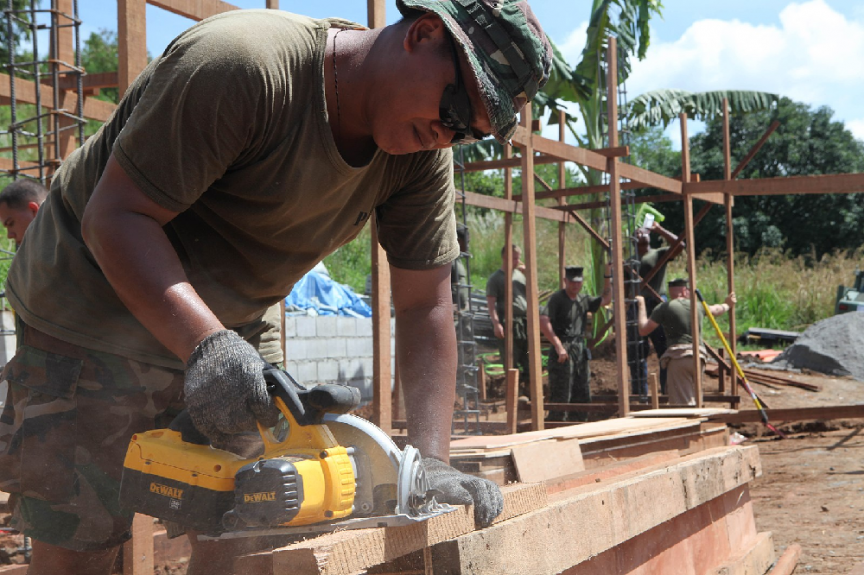The U.S. Department of Labor’s Occupational Safety and Health Administration (OSHA) created new crystal silica standards for the construction industry last year. We discuss what you need to know in order to stay compliant.
A new OSHA standard was created back in September to protect workers from respirable crystalline silica, which can occur during typical construction tasks like drilling, jackhammering, and the operation of some heavy machinery. OSHA states that the new standards will ensure the health and safety of the two million construction workers who are regularly exposed to silica dust, minimizing the likelihood of health complications and increasing on-site productivity.
In an interview with Facility Executive, concrete industry veteran Joe Nasvik stressed that the new standards would be more than adequate for protecting workers. “The new rule limits the amount of silica dust that workers can be exposed to on the job to 50 μg/m3 averaged over an eight-hour shift for all industries covered by the rule,” he explained. “That’s about 1/20th the size of a grain of salt.”
Employers Given a Choice
Employers have been allowed some flexibility in how they achieve compliance with the new standards. Firstly, they can make adjustments to tools and construction methods in accordance with the new permissible exposure limit (PEL). For example, workers sawing materials that contain silica must use a saw that automatically applies water to its blade during use, which limits particle emissions. If this saw is used for more than four hours, the worker would be required to wear a respirator with an assigned protection factor of ten or more.
The second option is to institute particular forms of dust control such as watering, ventilation, or chemical suppressants, all of which will keep particle emissions under the PEL. Employers who choose this option must periodically measure silica levels to ensure that they don’t exceed 50 micrograms of silica per cubic meter of air. If no form of dust control proves sufficient at accomplishing this, employers must provide workers with respirators.
Not every aspect of a construction site will need to change, as the new standard will not affect areas with lower silica exposure. For example, workers who mix mortar or pour concrete footers can continue their work as usual.
Manufacturers in the construction business are voicing their support of the rule and OSHA’s commitment to worker safety. “Clearly the danger from silica dust exposure still exists,” said Robert Bosch Tool Corporation marketing manager David Pizzolato in a statement.
Medical Exams, Written Plans, and More
Whichever option they choose, the new standards also demand employers meet some additional protective requirements, including medical surveillance, employee training, and exposure assessment. These measures include offering free medical exams every three years, creating a written exposure control plan, and finding alternatives to housekeeping practices that have been shown to result in high silica exposure levels.
Nasvik argues that while the regulations may seem daunting, implementation is a simpler process than it may seem, and argues that “it’s easy to determine what steps are necessary to ensure compliance” if worksite leaders are careful to refer to the regulations throughout operations.
The Case for Chemical Dust Control
Midwest Industrial Supply, Inc. offers a unique solution to silica dust emissions in industrial settings, one that will prove especially valuable in light of these regulations. Midwest will work with you to implement new dust control measures that allow your business to avoid a complete overhaul of operations.
Midwest designs chemical dust suppressants that are independently certified to be environmentally friendly, making it easy to achieve compliance without restructuring or restricting routines. By contrast, other dust control methods like watering may seem cost-effective, but can ultimately erode surfaces faster and actually increase the concentration of harmful sediments.
Our industry-leading suite of synthetic dust control products includes EnviroKleen®, which acts as a sealant on roads and other surfaces, locking in harmful particles and keeping the air in your construction site clean and safe. They have been independently tested and certified by a variety of agencies, including the EPA, Boeing, and several Canadian agencies.
Regardless of your needs, regulations, and budget, we at Midwest work personally with you to formulate a long-term dust control plan that will bring you the results you need. We can apply our expertise and years of experience to help you exceed your goals and stay compliant.
On February 20-24, the 2018 PCI Convention & National Bridge Conference is coming to Denver, and we’re excited to be a part of it! If you’re planning on going, make sure to swing by our booth to discuss how OSHA Crystalline Silica Rule compliance has never been more crucial, and how Midwest is already helping facilities comply.


